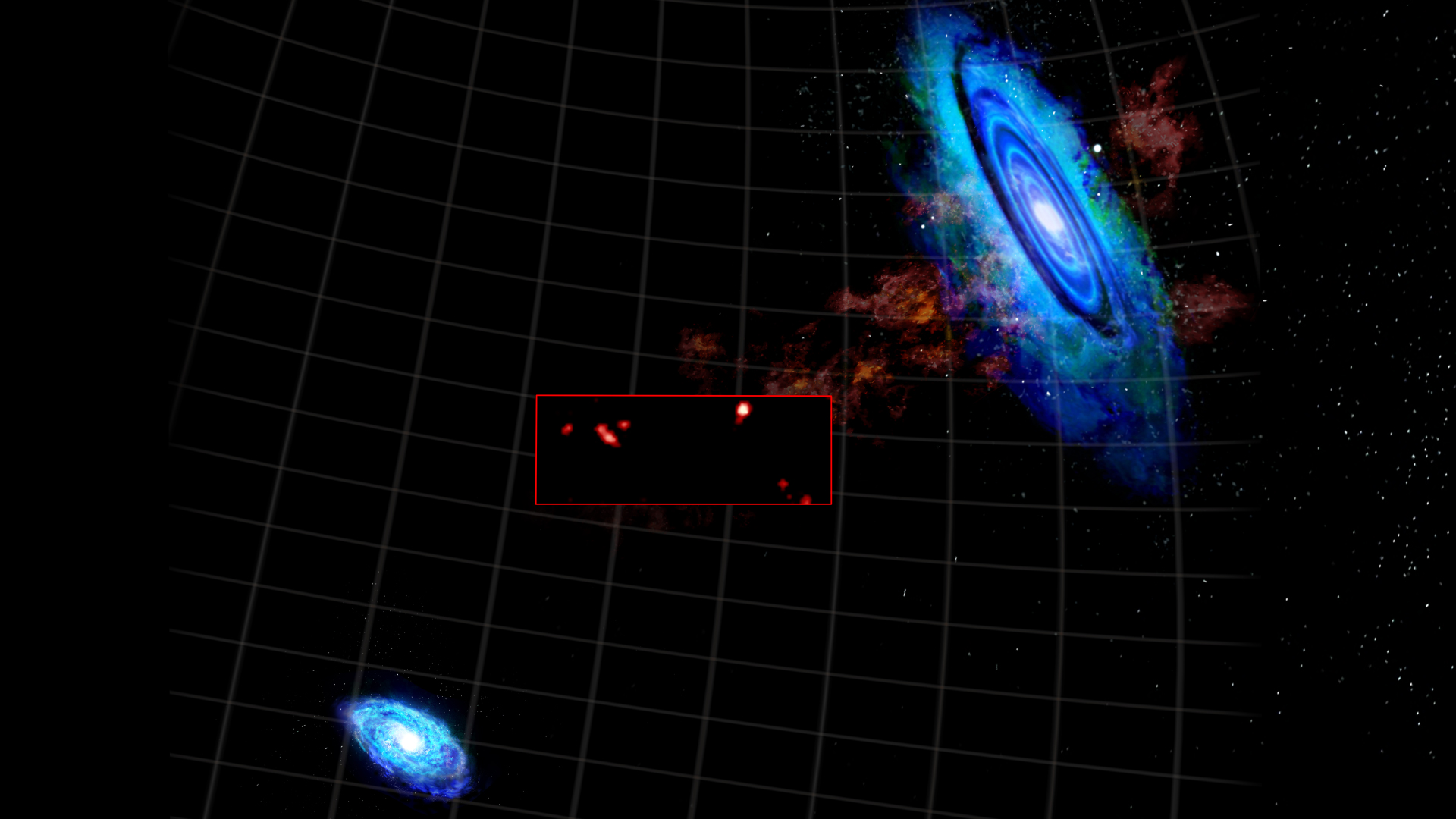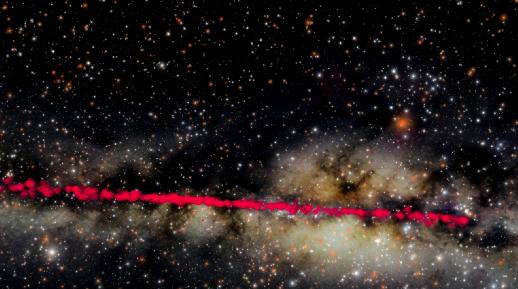![]()
National Radio Astronomy Observatory
“In a dark, starless patch of intergalactic space, astronomers have discovered a never-before-seen cluster of hydrogen clouds strewn between two nearby galaxies, Andromeda (M31) and Triangulum (M33). The researchers speculate that these rarefied blobs of gas — each about as massive as a dwarf galaxy — condensed out of a vast and as-yet undetected reservoir of hot, ionized gas, which could have accompanied an otherwise invisible band of dark matter.

Intergalactic clouds between Andromeda and Triangulum galaxies
The astronomers detected these objects using the National Science Foundation’s Green Bank Telescope (GBT) at the National Radio Astronomy Observatory (NRAO) in Green Bank, W.Va. The results were published in the journal Nature.
‘We have known for some time that many seemingly empty stretches of the Universe contain vast but diffuse patches of hot, ionized hydrogen,’ said Spencer Wolfe of West Virginia University in Morgantown. ‘Earlier observations of the area between M31 and M33 suggested the presence of colder, neutral hydrogen, but we couldn’t see any details to determine if it had a definitive structure or represented a new type of cosmic feature. Now, with high-resolution images from the GBT, we were able to detect discrete concentrations of neutral hydrogen emerging out of what was thought to be a mainly featureless field of gas.'”
See the full article here.
The NRAO operates a complementary, state-of-the-art suite of radio telescope facilities for use by the scientific community, regardless of institutional or national affiliation: the Very Large Array (VLA), the Robert C. Byrd Green Bank Telescope (GBT), and the Very Long Baseline Array (VLBA)*.
The NRAO is building two new major research facilities in partnership with the international community that will soon open new scientific frontiers: the Atacama Large Millimeter/submillimeter Array (ALMA), and the Expanded Very Large Array (EVLA). Access to ALMA observing time by the North American astronomical community will be through the North American ALMA Science Center (NAASC).
*The Very Long Baseline Array (VLBA) comprises ten radio telescopes spanning 5,351 miles. It’s the world’s largest, sharpest, dedicated telescope array. With an eye this sharp, you could be in Los Angeles and clearly read a street sign in New York City!
Astronomers use the continent-sized VLBA to zoom in on objects that shine brightly in radio waves, long-wavelength light that’s well below infrared on the spectrum. They observe blazars, quasars, black holes, and stars in every stage of the stellar life cycle. They plot pulsars, exoplanets, and masers, and track asteroids and planets.




